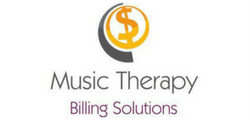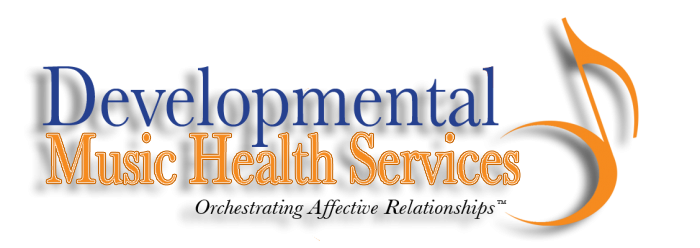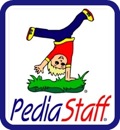I have a confession: I am not a fan of the word “musicking.” Not only is it a silly-sounding word to me, but you can’t even find it in Merriam-Webster. (Okay, technically it’s described as the “present participle of music,” meaning it’s the ongoing action of the thing called “music.” But unlike other present participles it doesn’t have its own definition. But I digress…)
However, I’m now willing to admit that perhaps I should be more open to musicking and its underlying concept. Or at the very least I’m ready to read and learn more about it.
What prompted this shift? A talk I heard in Montreal at the 15th International Conference of Music Perception and Cognition (ICMPC) by a researcher named Michael David Golden. It was a philosophical talk during which Dr. Golden explored the connective function of musicking to cognition. Not “cognition” as in attention, learning and memory, and executive functions, but a more ecological view of cognition that involves connecting the body, mind, and ecosystem.
I would do a poor job of recreating his argument, particularly as I just heard the talk once. However, the nugget that stuck with me—the one related to these musings—was his framing of musicking.
According to Dr. Golden, musicking is a social phenomenon, the purpose of which is to link or align the mental and emotional states of two or more humans.
Musicking had previously been described to me as “doing” music, or the act of creating, making, or engaging in music. The present participle idea. But that didn’t make sense to me. Music isn’t something to be “done,” is it? Sure, there’s “dance” and “dancing,” but there’s not “art” and “arting.” And like with art, there are others verbs associated with music—improvising, singing, playing, listening, composing. Why not stick with those?
But thinking of musicking as a way of interacting and engaging through music…that makes more sense to me. Particularly in a field so reliant on the therapist-client relationship. There are moments in the clinical space when music is the bridge between you and the client. When it’s about the connection and interaction that is occurring through a shared musical experience. In other words, rather than the music intervening in some way, it’s about the music facilitating an exchange.
As I mull this over, I find myself differentiating between music, music experiences, and musicking as it pertain to music therapy practice. “Music” could be considered as a stimulus or tool to be used for a therapeutic purpose. For example, there may be a particular song you select that allows a client to practice a specific aspect of vocal production. In this scenario, although there is a shared experience through singing together and an interaction that occurs, that is not the primary intent. Thus, music as a tool seems appropriate here.
I also see a difference between music and music experiences. Perhaps an example will help illustrate why. I have developed a music intervention called Musical Contour Regulation Facilitation (MCRF). This intervention involves the creation of three types of music experiences: those that will increase the physiologic arousal of preschoolers (high arousal), those that will decrease their physiologic arousal (low arousal), and those that are simply developmentally-appropriate (neutral arousal).
In designing these experiences, some rely primarily on the music itself, whereas others rely more on the experience being facilitated by the music. For example, in the MCRF intervention low arousal music should have a slow tempo, a lower-than-typical pitch range, soft dynamic level, and legato articulations. When during the intervention the task is to simply listen to the music, it’s the structural features of the stimulus itself that’s intended to lower the child’s arousal level. In contrast, during a music-facilitated stretching sequence, the music may have some of the same structural features described above, but in this component the arousal-lowering aspect is more focused on the experience of stretching.
So where does that leave us with musicking? Perhaps musicking can be used to describe those situations in which the primary focus is on a musically-facilitated exchange or interaction is occurring between client and therapist. This could potentially serve a multitude of therapeutic purposes across functional domains, including (though not limited to):
- Working on nonverbal communicative behaviors;
- Focusing on increasing sustained attention;
- Providing space for self- and/or emotional expression;
- Practicing social interactions; and
- Valuing client identity.
A final thought to share on these ideas. Although they are expressed categorically, I do not conceptualize it as such, as an either/or situation. Rather, I would pose that most, if not all, music therapy interactions include all three elements, but in different ratios depending on the clinical context. For example, there may be some clinical scenarios in which the music-as-stimulus holds precedence, and others where the musicking does. And this could be fluid even within a single therapeutic music experience as the music therapist is attuned and musically responsive to the client.
These are, of course, all musings-in-process, open to ideas and subject to change. I plan to read and think on this more, and welcome your comments, thoughts, and suggested readings. The comments section below awaits…
P.S. As I revised this post, I am reminded of previous posts exploring ideas on music IN versus music AS therapy that seem related to this. Check those out here, here, and here if interested.



 orcid.org/0000-0001-8665-1493
orcid.org/0000-0001-8665-1493






{ 1 comment… read it below or add one }
“…According to Dr. Golden, musicking is a social phenomenon, the purpose of which is to link or align the mental and emotional states of two or more humans…”
According to the good Doctor’s definition…
If I whistle a tune alone, I am not “musicking”. However, if another person (or more) are around me to hear it, then I am “musicking”.
The concept of this leaves me in limbo. If Bob Dylan recorded an album in a sound studio alone, was he not musicking? What if the same said album was played to a room full of 100 people. What have you then ?
It is possible that I have failed to grasp the concept of this discussion. Or maybe it is possible that the semantics in musical research have run full circle, and then some.
“Sometimes two molecules of hydrogen mixed with one molecule of oxygen is just plain old water”
You must log in to post a comment.